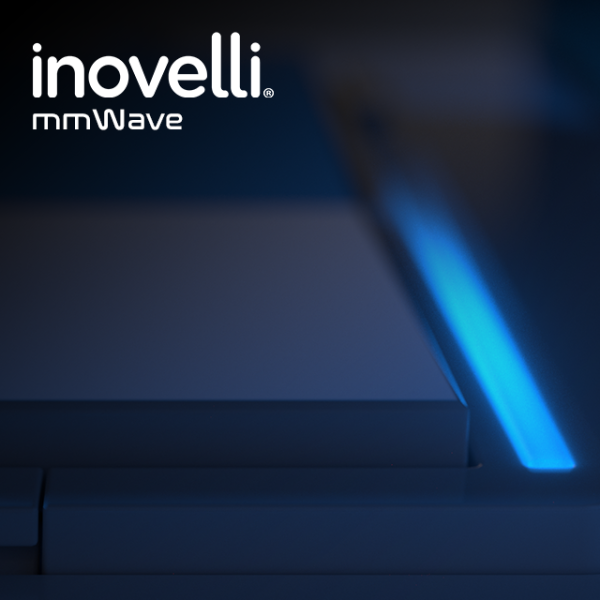
The first millimeter wave (mmWave) smart switch on the market that detects human presence/occupancy.
OVERVIEW
Introducing the newest innovation from Inovelli: a radar equipped smart switch that detects human presence. Gone are the days where you’re sitting in a room and the motion sensor turns the lights off, making you wave your hands around to turn them back on. With millimeter wave (mmWave) technology, the sensor emits radar which can detect whether you’re present or not. In fact, it’s the same technology that car sensors use to dynamically detect their surroundings.
So, who is Inovelli for those that don’t know? Simply put, we’re a smart home company who has spent the last 7 years specializing in smart lighting. We’ve sold over 145k¬†units, generating $7.5 million in revenue across the United States and Canada and we’re here to bring our latest idea¬†to life, the mmWave smart switch.
WHAT IS A SMART SWITCH?
If you already know what a smart switch is and just want to get into the details, feel free to skip this part.
You may be asking yourself, “what is a smart switch?”. Great question.
Smart switches are normal looking light switches that have a wireless radio built into them that communicates with a hub or gateway to turn your lights on/off or dim. They can be used as normal switches and blend in with your aesthetics. The main benefit here is that someone who isn’t familiar with your smart home can use the switch like normal and never know it’s part of your home automation.
If you don’t know what a hub/gateway is, don’t worry, we’ll help! More on that at the end of this section.
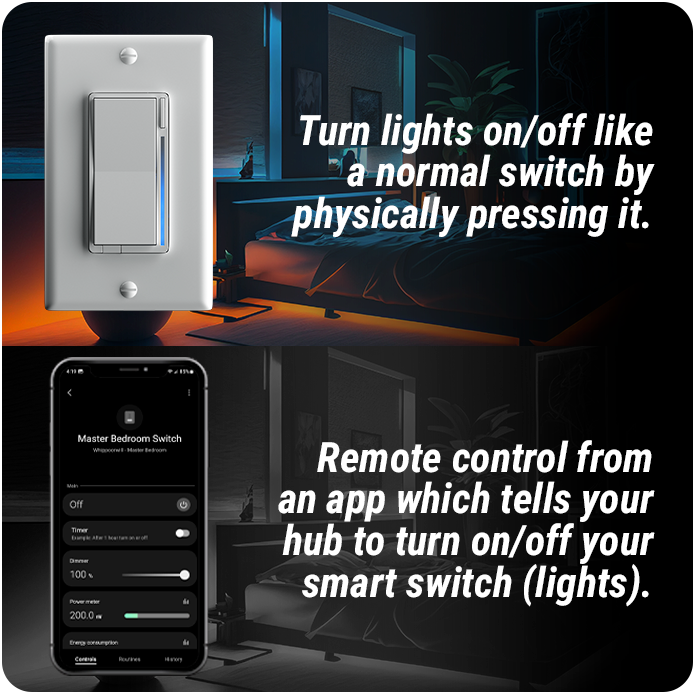
Here’s an example of how a smart switch is used remotely (using the Aeotec SmartThings Hub):
  
 
Don’t have a hub?
We’ve got you covered. Our recommendation for the easiest setup is going to be using Aeotec’s SmartThings Hub, which has a very simple, but powerful app. Simply select the, “Beginner Bundle” Perk and we’ll ship you the hub right away so you can get started before this switch even launches.
HIGHLIGHTS/FEATURES
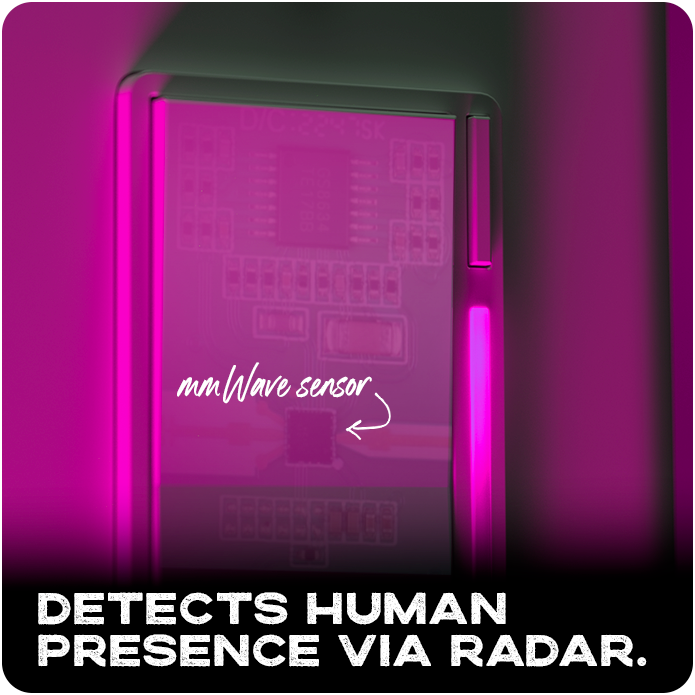
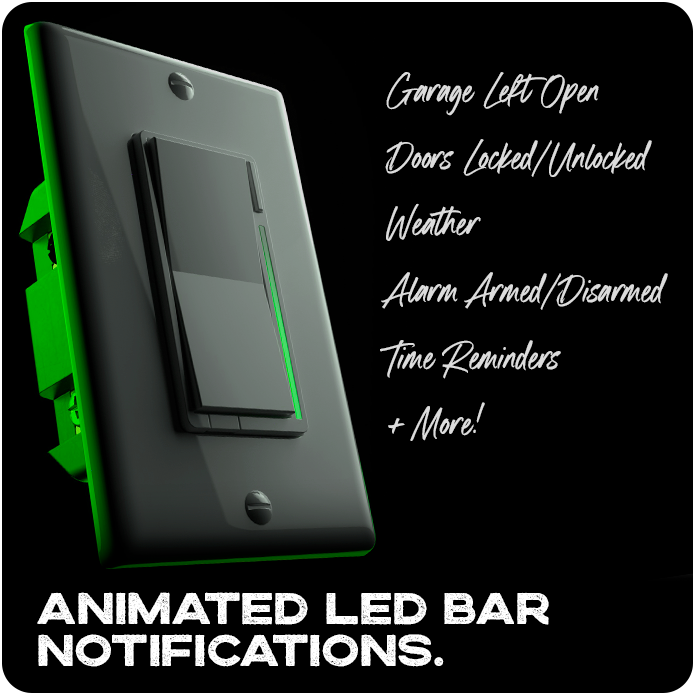
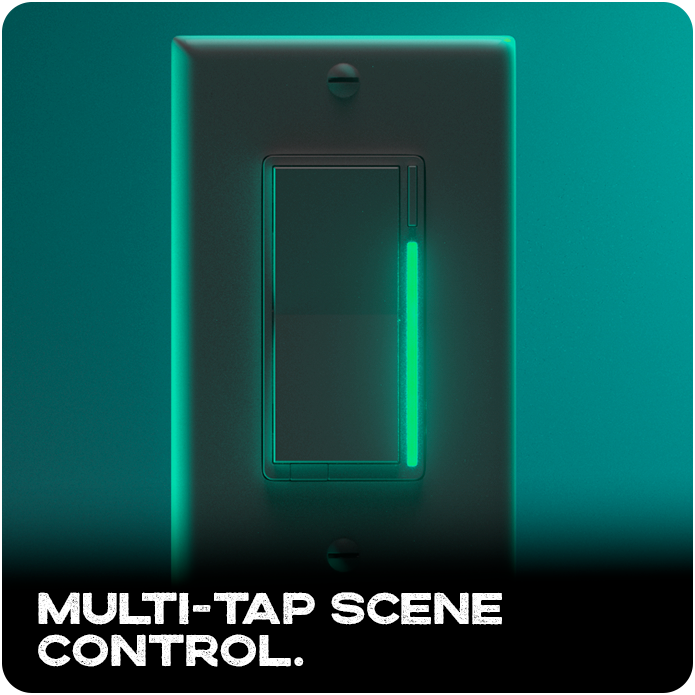
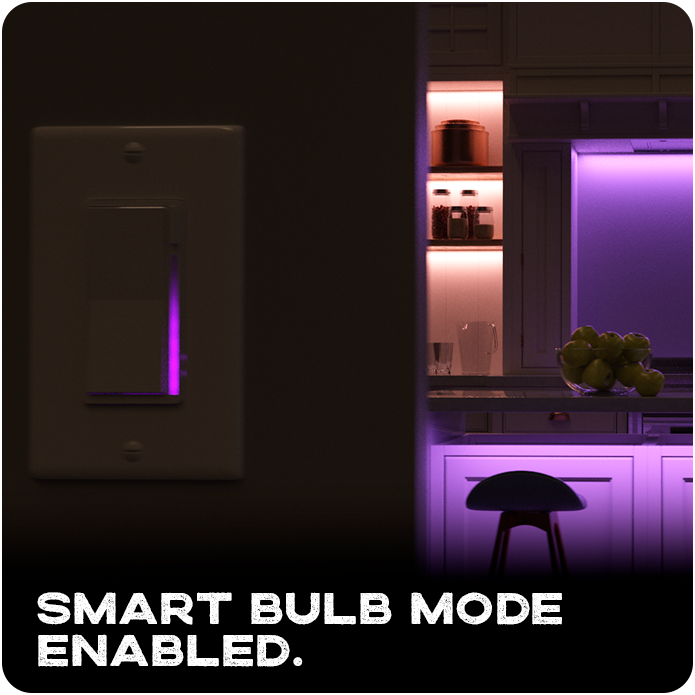

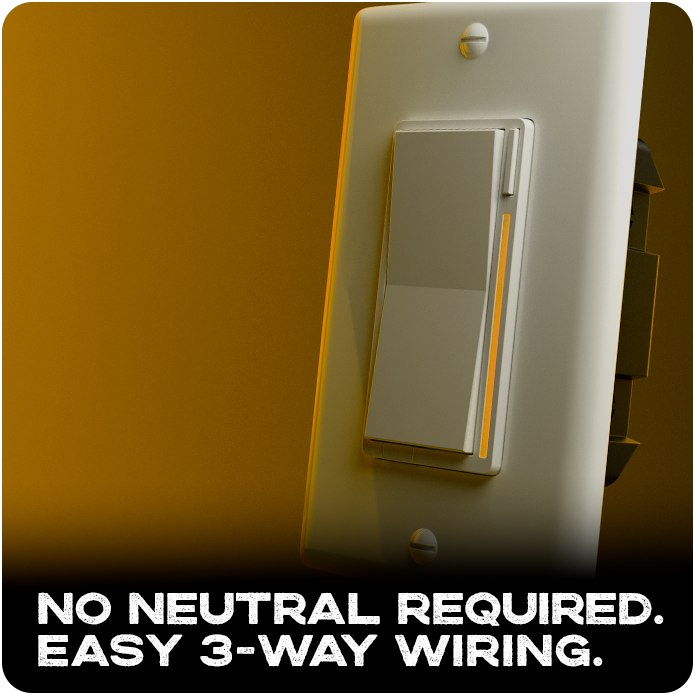
MAIN FEATURE EXPLANATION
Below we’ll show you what this will look like within the Samsung SmartThings app to give you an idea of how the main features shown above come to life and give a further explanation into each element of the switch. Of course, this product will also be supported on Home Assistant (ZHA & Zigbee2MQTT) and Hubitat.
Human Presence Detection
The entire reason we created this switch was because we were tired of the traditional Passive Infrared (PIR) sensor switches. How many times have you found yourself sitting at a computer and your lights turn off because no motion was detected? Or better yet, have the lights ever shut off on you mid-Reddit browsing on the toilet in your bathroom and you have to waive your hands to try to get the light to turn on?
Finally, from a security side, have you ever wanted the peace of mind knowing your children are in their rooms sleeping?
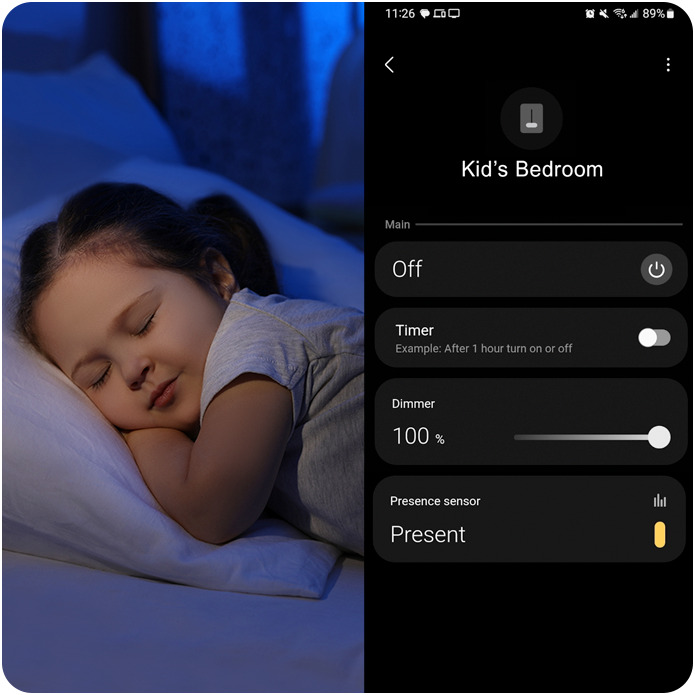
Where a typical Passive Infrared (PIR) motion sensor detects a heat signature moving across its field of view, Millimeter Wave (mmWave) uses 24 GHz radar and onboard processing to monitor the presence of people in a space. While a PIR sensor can’t detect a person once they stop moving, a mmWave sensor recognizes that a person has entered the space and will continue to identify that they are there until it identifies them leaving the area. More on mmWave technology at the end of the listing.
Animated RGB LED Bar Notifications
The LED Bar on the right side of the switch can be used as a, “heads-up display” to alert you of various triggers. For example, you can have the switch LED Bar pulse purple¬†every morning at 9:30 to remind you to take your medicine. Another popular example is to have the LED Bar turn red when your alarm system is armed and green when it is unarmed. Finally, be notified of severe weather by having your LED Bar turn orange and chase as shown below.
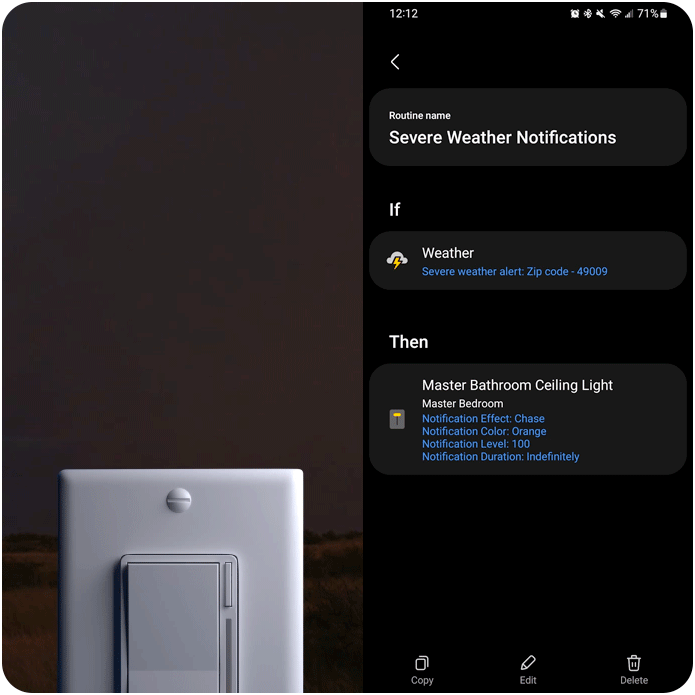
With individually addressable LED’s, a full color spectrum, and over 15 different animations, the sky is truly the limit in what you can notify yourself of.
Multi-Tap Scene Control
Imagine controlling your entire house at the touch of a button. With multi-tap scene control, you can setup various, “scenes” that will activate based on how you tap the switch. For example, let’s say you want to run a, “bedtime” scene when you go to bed where if you double-tap down on your light switch, all of your lights turn off, your doors lock, your garage doors close and the temperature is set to 68.¬†
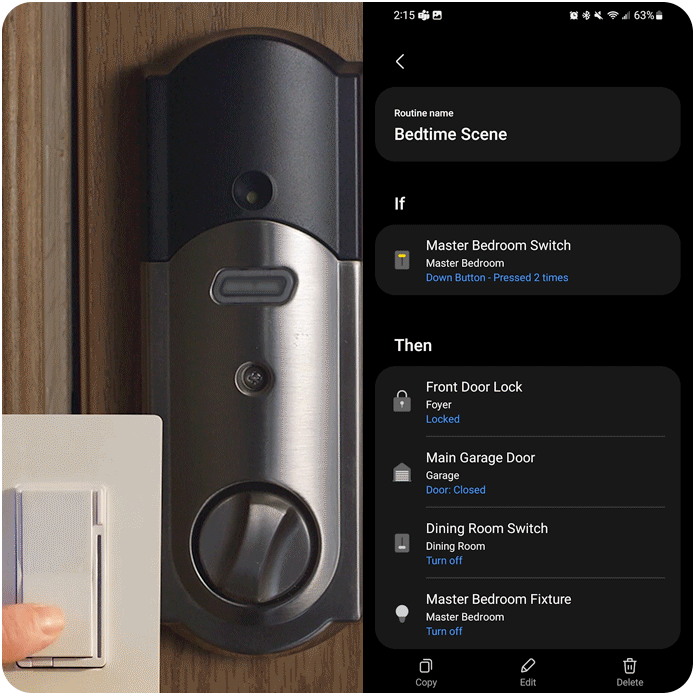
With 24 different button combinations, you can setup virtually any scene you’d like. From turning on movie lights, to locking the doors, rest assured, this switch allows full control at your fingertips.
Smart Bulb Mode
Control all your smart bulbs directly from your switch by using, “Smart Bulb Mode”. SBM locks in full power to the smart bulb and uses digital commands to turn on/off/dim (or change colors) of the smart bulb. No more covering up the switch with tape to keep your smart bulbs powered!

ADDITIONAL FEATURES & SPECS
This switch is a powerhouse of features. With over 60 parameters, you can customize it to your personal preferences. Below are the current features and specs – if these change, we will let you know.
NOTE: The final switch may include lux monitoring which would add a tiny sensor at the bottom of the switch near the air-gap. We kept it out right now because we wanted to test it first before implementing it. This will not add to the final cost on this listing.
FEATURES
- Bulb Calibration – Calibrate your switch to work with your LED, CFL or Incandescent bulbs by setting the min/max dim level (to prevent flickering), leading/trailing edge (trailing not available in certain configurations), dimming speed and ramp rate
- Customizable Switch Speeds (Dimming & Ramp Rate) – Choose the speed at which your switch turns on and off as well as the quickness of the dimmer when holding the paddle (Note: You can have separate speeds for on and off)
- Multi-Way Compatibility – Wire your switch to work in a 3-Way, 4-Way, etc setup. Choose to use either your existing, “dumb” switch, an add-on/aux switch, or another smart switch
- Auto-Off Timer – Have your switch turn off after x seconds
- Default Level (Local & Remote) – Set a default level for your switch to ramp to when it turns on. This is typically used during certain time periods such as bedtime (ie: Bathroom light turns on to 10% between the hours of 10pm – 6am to prevent you from waking someone else up and also to not blind yourself)
- Power Restored Memory Function – Choose to have your switch turn off, on or go to the last level it was prior to a power outage
- 2x-Tap Up for Preferred Brightness – Turn your switch to your preferred brightness quickly by double-tapping it (disabled by default)
- Default LED Color/Brightness – Set the LED Bar color as well as the brightness when the switch is on and off
- Individually Addressable LED’s – Have the ability to control each LED color and intensity
- Upgradeable to Matter – This switch uses the MG24 chipset which allows for an Over-the-Air (OTA) upgrade to Matter (when the Matter firmware is released)
- OTA (Over-the-Air) Firmware Updates – With a passionate community that always has new ideas, our firmware is able to be updated with enhancements and this switch supports those firmware updates over-the-air.
- Local Configurations – If you have a hub that does not support parameter changes, you can program specific parameters directly from the switches config/favorites button.
- Zigbee Bindings – With Zigbee bindings, you can “bind” (pair) 2x+ Inovelli switches directly to one another (eliminating the hub), you can pair your Inovelli switches to other Zigbee bulbs (such as Philips Hue) or virtually any other Zigbee device that supports Zigbee binding.
SPECS
NOTE: These specs are based off our Blue Series 2-1 Switch, which we plan to model this switch off of. They are subject to change and we will let you know if they do.
- Power – 120V AC, 60Hz
- Signal (Frequency) –¬†2.4GHz
- Protocol – Zigbee 3.0 (Upgradeable to Matter)
- Chipset – Silicon Labs MG24
- mmWave Sensor – 24GHz
- Operating Temperature Range – 32-95¬į F (0-35¬į C)
- Maximum Load (Watts) –¬†600W Incandescent, 300W LED, 150W CFL (Not rated for inductive loads or fans).
- Range – Up to 100 meters line of sight between the Wireless Controller (HUB) and the closest Zigbee Repeater.
- Certifications –¬†UL or ETL Listed (Both USA & Canada), FCC/IC & Zigbee 3.0 Certified
For indoor use. Specifications subject to change without notice due to continuing product improvement.
MEET THE INOVELLI TEAM


This project has¬†an amazing US based team (shown above) as well as an experienced R&D team that spans across Canada and SE Asia. Together, we’ve built and sold over 145k units equating to over $7.5 million USD, but¬†we’re still the small, responsive company we were from the start, equally as passionate about smart homes and the technology that goes into them. We¬†love working alongside our thriving community of smart home owners to put the best products in our own homes and we can’t wait to start working on this product. Thank you for your support and we look forward to chatting with you online or seeing you at trade-shows.
Eric H. РFounder
Eric M. РFounder
Courtney W. РOperations
Nate B. РTech Support
Alex M. – Firmware
PROJECT LINUS
Each project we embark on has a special codename, and this one is no different. The inspiration for this project came from a Tweet by Linus, the creator of Linus Tech Tips. In the Tweet, he expressed frustration with the performance of a competitor’s switch (there’s much more to the story, but you can investigate that on your own).
As longtime admirers of Linus and his work, we were disappointed to see him lose some enthusiasm about the capabilities of an automated home. So we’ve made it our mission to create the ultimate switch to work with Home Assistant (among others) to ensure it integrates seamlessly into Linus’s setup. We’re thrilled to partner with all of our supporters and we’re confident this amazing switch will bring Linus renewed faith in the smart home industry. We can’t wait for the day when he raves about our latest innovation.
OTHER HUB CONCEPTS
Below are some screenshots from how the switch should show up on various hub/gateways. They are taken from how our current Blue Series 2-1 Switch shows up, so these should be pretty accurate.
Samsung / Aeotec SmartThings
Here’s how the switch should show up in SmartThings (and how our Blue Series 2-1 switch currently does):
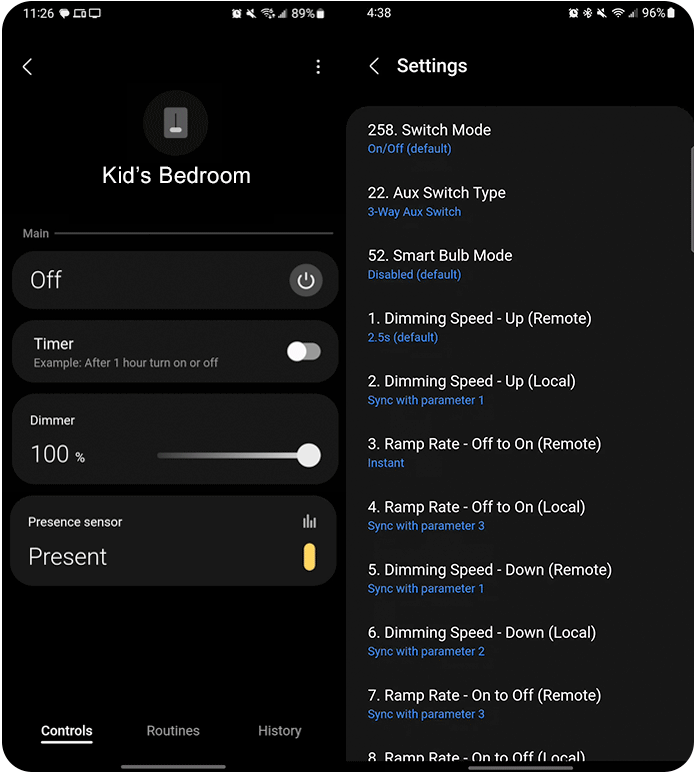
The left side shows the main device control menu where you can remotely turn on/off or dim the switch, whereas the right side shows the various settings that are configurable on the switch.
Hubitat
As with SmartThings, all capabilities will be exposed on the Hubitat platform. This includes all of their hubs (C4-C8). Here’s how the switch would show up in Hubitat:
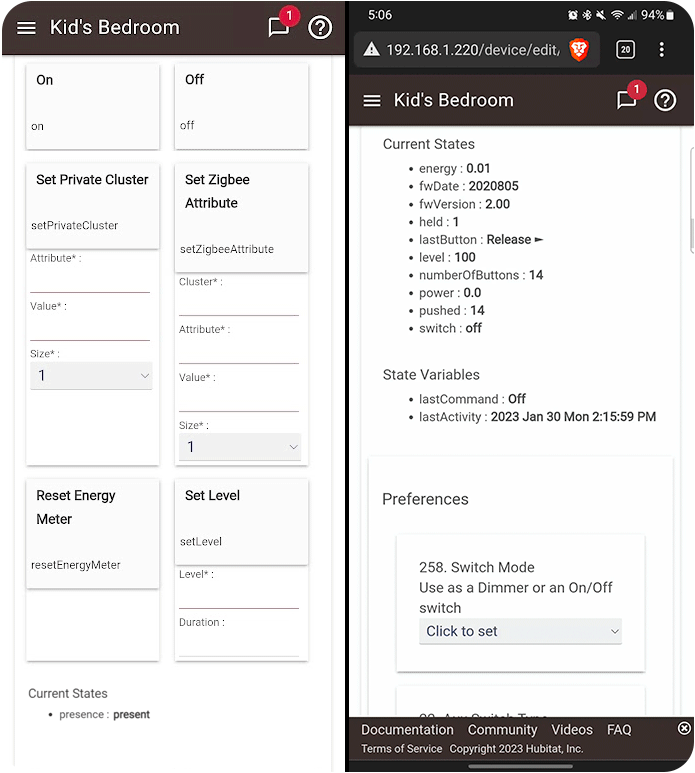
Home Assistant
This will also work with both ZHA and Zigbee2MQTT.
MORE ABOUT MILLIMETER WAVE (MMWAVE)
If you’re unfamiliar about millimeter wave, don’t feel bad, it’s relatively new to the smart home space. However, it’s been used in a lot of really cool products, some of which we use daily.
Probably the most common use-case is within cars. These are the sensors that can detect dynamic driving conditions (distance from moving vehicles, how many vehicles are around you, etc).
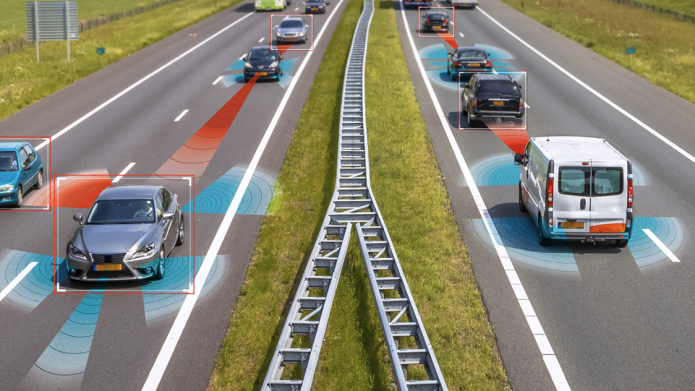
Image Source: https://www.ti.com/sensors/mmwave-radar/automotive/overview.html
PIR (Passive Infrared) vs mmWave Radar Sensors
PIR Sensors are the current solution to motion detection and have been used since the 1970’s and can commonly found in wall switches,¬†sensors, and light fixtures. PIR works by¬†monitoring the change in the infrared light radiating from¬†an object in its field of view.
This means that if the object is stationary (ie: typing at your desk, sleeping and, yes, sitting on the toilet), the sensor will not pick up a radiation change and therefore think you’re not present.¬†
mmWave works by using radar (the Doppler principle) to determine the objects motion, speed and even direction. In the case of this switch, the sensor will transmit a 24 GHz waveform which will reflect off an object that is in the sensor’s field of view. This reflected waveform is received by the radar transceiver and will have a frequency difference referred to the Doppler frequency (think Doppler radar used for weather) and will give the exact position of the object in the field of view.
This is important because radar will constantly detect the object, even if it’s still, which is the limitation of PIR (which again, tries to detect the change of temperature which won’t happen if you’re still).
Said in simple terms, PIR detects only motion, while mmWave detects motion and presence.
Examples in the Smart Home
Bringing this technology to the smart home space is exciting and has a ton of amazing implications.
Smart Home Solver created a video talking about a standalone sensor that he tested that goes over real life examples that can be found here: https://www.youtube.com/watch?v=jVjrgQSWlLI
Here are some of the use-cases for your smart home:
- Lighting Automation:¬†Turn¬†on/off your switch when you enter/leave the room without worrying about the lights turning off when you’re still or¬†have lights turn on dim at night when you’re moving throughout the house to keep from waking people, but to give enough light for you to walk safely
- Security / Peace of Mind:¬†Have your LED Bar light up and/or lights come on¬†if motion/presence is detected or have it turn green if you’re children are in their room and red if they leave
- Climate: Regulate temperature by setting automations with your thermostat when you’re present or have your smart blinds automatically open or close when presence is detected (depending on season)
- Electric / Water Bill Reduction: Have lights remain off if no presence is detected and use the LED Bar (or audio alert) to let you know you’ve been in the shower for too long
More resources:
https://www.seeedstudio.com/blog/2022/01/03/mmwave-radar-sensing-fmcw-radar


